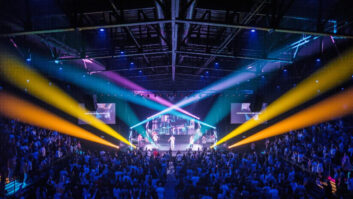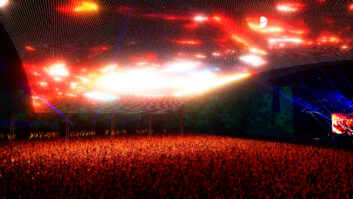Lighting designer Dan Heap of danheap explains how, through careful design and good control, lighting of bars and restaurants can be a useful tool to deliver the right ambience, from lunchtime through till last thing at night.
Lighting bars and restaurants is seen by some designers as a daunting task, as the space needs to perform in different ways throughout the course of a day. Restaurants and bars offer their clients different spaces in which to relax and lighting should support this, both in terms of colour appearance and intensity. When designed correctly, the same lighting scheme can function equally as well for lunch as it can for late evening, despite the fact that a slower pace and more intimate atmosphere has replaced a busy and brighter feel.
A mix of cool and warm light sources will allow a space to adapt to the time of day or the type of function ( see pictures). Colour should be used sparingly and as a feature, rather than as an ambient source. The choice of colour is also the key to achieving an inviting interior. Washes of light to the perimeter of a space allow the room to be defined, whilst accent lighting and a mix of sources can be used to pick out key areas and achieve different levels of intimacy to suit a broad client mix. Lighting is a hugely subjective medium so by achieving a balance between the bright and the intimate, most diners will find a space in which they feel comfortable.
Accenting or down-lights over tables create very distinct pools of light and reduce the flexibility of a space. A better approach is to deliver a wash of light to larger areas, allowing tables to be set out according to the client base on any given evening. The other useful design tool is control, ie switching and dimming. A well-designed and, above all, simple to operate lighting control system will ensure that it isn’t left to staff members to remember to dim the lights. A simple timer, set to fade down gradually over a 30-minute period can be a very effective way of taking the space from an early evening scene and changing the ambience for mid evening diners.
Scene control, or the dimming of groups of light fittings, allows a bar to achieve distinct areas suited to different types of clientele. Brighter lighting around the main bar area, for example, can drop away to darker, more atmospheric and intimate lighting as you move towards the periphery of the space.
A key area, where lighting within a bar or restaurant can succeed or fail, are the washrooms. Many clients return to a restaurant purely because they feel so great in front of that mirror. The best lighting for a mirror is achieved in the classic theatre tradition of an even wash to the front of the face, from a vertical source, either side of the mirror itself. Whilst dramatic, a spotlight over each basin delivers a poor light to the face and gives shadows which are not good for applying make up or grooming.
The rest of the washroom and corridor area are places where drama and feature lighting can be used to good effect. Consideration should also be given to the balance in light levels between restaurant and washroom so as to avoid a sudden shift from light to dark.
A final thought should also be given to the natural light level outside. Customers walking in on a June evening come from a much brighter ambient to that found in the autumn months and the lighting control should work with this. An astrological clock allows the dimming system to work with sunset times throughout the year, activating the lighting scenes to change as the sun goes down.
Good design and smart control will allow the lighting to support the interior design at all times of the day or year, delivering a flexible space to suit all types of clientele.
Dan Heap is design director at danheap and also collaborates with AV system integration specialist SMC on lighting and control solutions.







